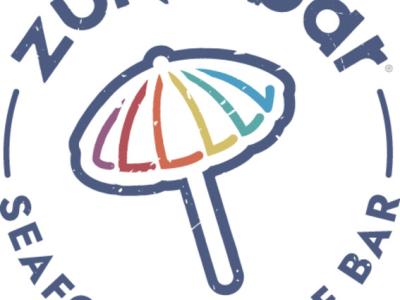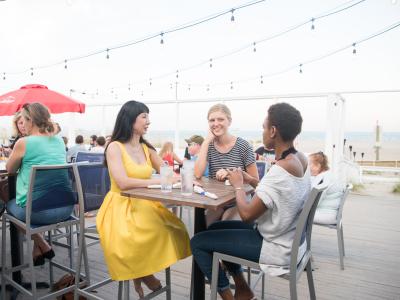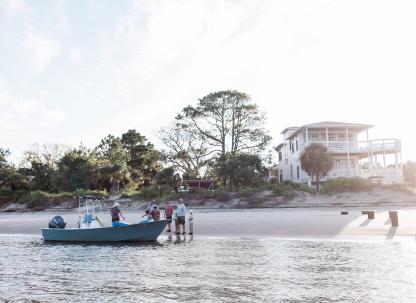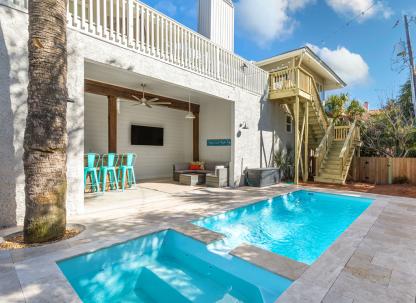Bird Watching on Tybee Island
Host to over 211 bird species, Tybee Island and Little Tybee are perfect destinations for observing migratory birds. So, whether you plan to stroll on the beach, lounge on the veranda or take a boat ride along the marshes – Tybee Island’s bird population is sure to keep you entertained!

Type of Birds You'll See
Year round, Tybee Islanders often see, and hear, the American Oystercatcher, Great Blue Heron, Black and Yellow Crowned Night Heron, Green Heron, Great Egret, Snowy Egret, Louisiana Heron, Black Skimmer, Clapper Rail, Osprey, Brown Pelican, Cormorant, and Willet. In the winter, Tybee sees a variety of ducks/water fowl including Bufflehead, Merganser (both Hooded and Red Breasted), Loons, and Scoters.
North Beach
One of the easiest locations to find excellent birding is on the north beach near the Tybee Island Light Station. From the beach, you will see the Northern Gannett, various Terns, ducks and gulls flying offshore, or probing in the sand for food. The rock jetty at the edge of the water is the place to find the Purple Sandpiper. The Sally Pearce Nature Trail is a great place for amateur botanists and birders to stop. Although it is a short walk, it is a good spot for warblers, the Painted Bunting, and many different local plants.
Nature Trails
The island’s many nature trails host a variety of birds. McQueen’s Trail and the Sally Pearce Nature Trail are great places to spot warblers, the Painted Bunting and other vocal birds. Look (and listen) for these from spring through summer along the edges of the woodlands. In the winter, at the mouth of the river, you can see loons, pelicans, ruddy ducks and cormorants.
Waterways
Take a boat or kayak for a ride through Tybee’s Intracoastal waterways and marshlands to glimpse the Black and Yellow Crowned Night Heron, Great Blue Heron, Green Heron, Great Egret, Snowy Egret, Louisiana Heron, Osprey, Brown Pelican and so many more. Be sure to paddle past the Cockspur Lighthouse for a great view of birds sunning themselves on the rocks!
Little Tybee Island
Birders should also visit Little Tybee Island, an uninhabited island just south of Tybee. Little Tybee is a 7,600-acre Natural Heritage Preserve owned by the state of Georgia. The birding is spectacular as it is undisturbed and only accessible by boat. Contact a local captain/naturalist or a kayaking outfit to set up a visit.
Fort Pulaski National Monument
Fort Pulaski is also a point of interest for birders. The marsh that surrounds the fort and nearby Lazaretto Bridge is a great spot in the winter for Sparrows, both varieties of Sharp-tail, as well as Marsh Wrens. There are plenty of trails to walk around on, and you may spot a flock of Cedar Waxwings. This is another good spot for warblers and the Painted Bunting. On the bridge leading to the fort, look out for Forester's Terns lining the railing in winter. We welcome you and may you have a great birding season!
#VisitTybee
Use the #VisitTybee hashtag and share photos of your Tybee adventures with the rest of the world.









